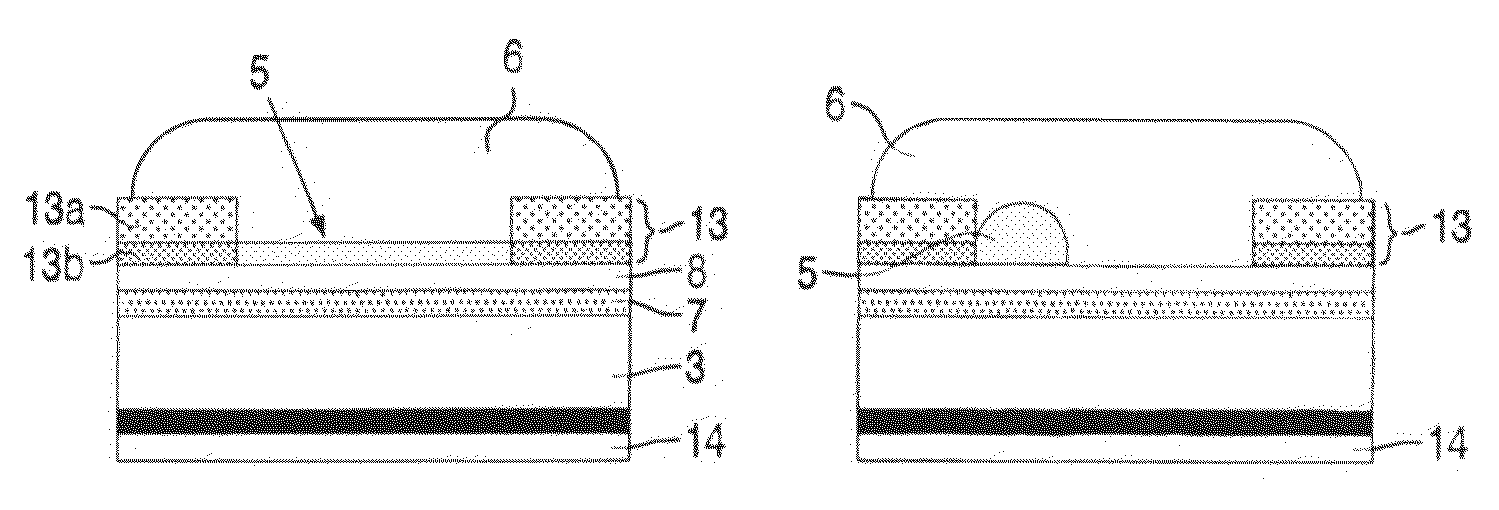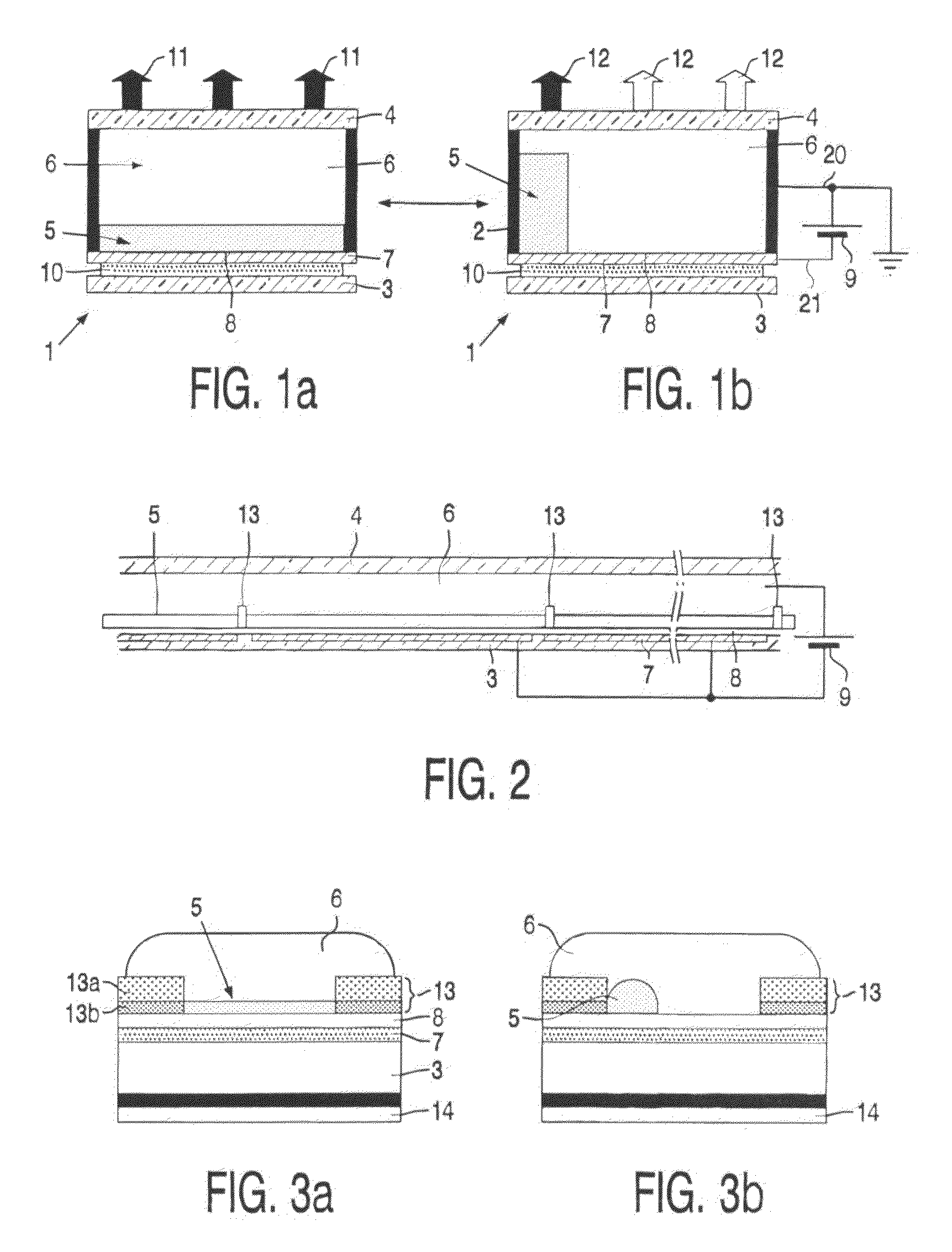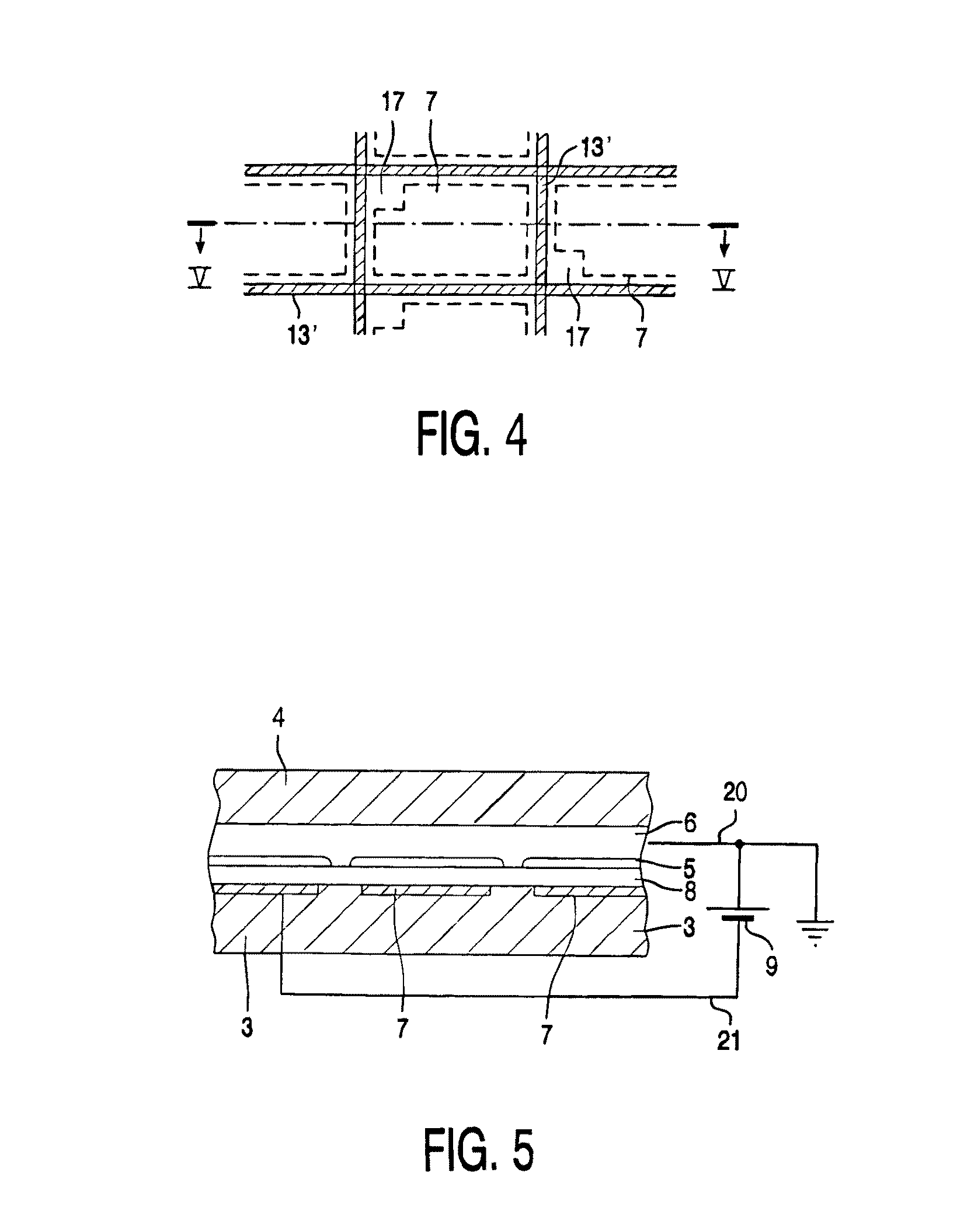Display device
a display device and display technology, applied in the field of optical switches, can solve the problems of reducing brightness for smaller pixels, moving or breaking the oil layer, and increasing the reflectivity of the image,
- Summary
- Abstract
- Description
- Claims
- Application Information
AI Technical Summary
Benefits of technology
Problems solved by technology
Method used
Image
Examples
Embodiment Construction
[0024]FIGS. 1a and 1b show a diagrammatic cross-section of a part of a display device 1 which shows the principle on which a display device according to the invention is based. Between two transparent substrates or support plates 3, 4 a first fluid 5 and a second fluid 6 are provided, which are immiscible with each other. The first fluid 5 is for instance an alkane-like hexadecane or as in this example a (silicone) oil. The second fluid 6 is electroconductive or polar, for instance water or a salt solution (e.g., a solution of KCl in a mixture of water and ethyl alcohol).
[0025]In a first state, when no external voltage is applied (FIG. 1a) the fluids 5, 6 adjoin the first and second transparent support plates 3, 4 of e.g. glass or plastic. On the first support plate 3 a transparent electrode 7, for example indium (tin) oxide is provided and an intermediate less wettable (hydrophobic) layer 8, in this example an amorphous fluoropolymer (AF1600).
[0026]When a voltage is applied (voltag...
PUM
 Login to View More
Login to View More Abstract
Description
Claims
Application Information
 Login to View More
Login to View More - R&D
- Intellectual Property
- Life Sciences
- Materials
- Tech Scout
- Unparalleled Data Quality
- Higher Quality Content
- 60% Fewer Hallucinations
Browse by: Latest US Patents, China's latest patents, Technical Efficacy Thesaurus, Application Domain, Technology Topic, Popular Technical Reports.
© 2025 PatSnap. All rights reserved.Legal|Privacy policy|Modern Slavery Act Transparency Statement|Sitemap|About US| Contact US: help@patsnap.com



